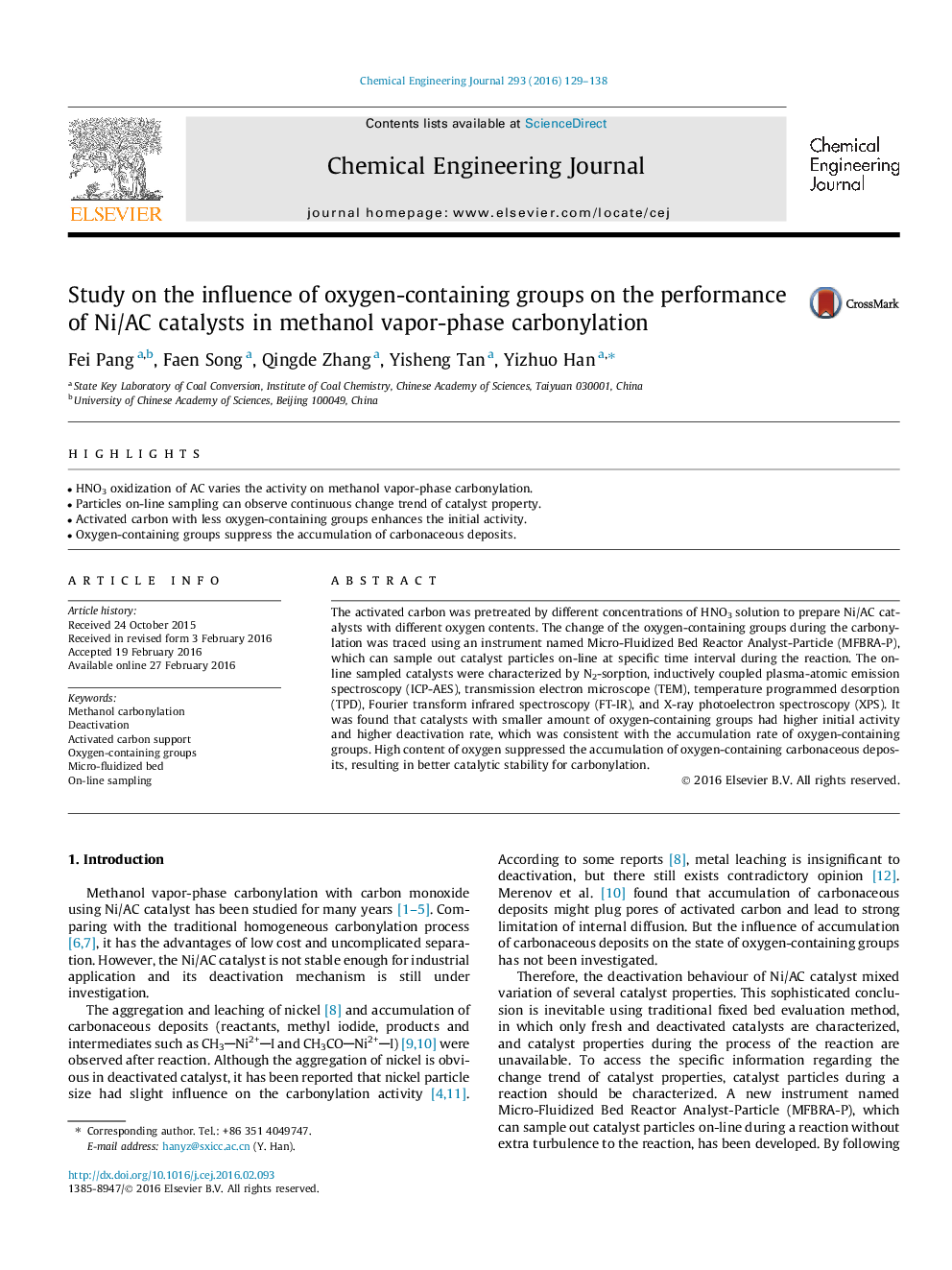| Article ID | Journal | Published Year | Pages | File Type |
|---|---|---|---|---|
| 6581963 | Chemical Engineering Journal | 2016 | 10 Pages |
Abstract
The activated carbon was pretreated by different concentrations of HNO3 solution to prepare Ni/AC catalysts with different oxygen contents. The change of the oxygen-containing groups during the carbonylation was traced using an instrument named Micro-Fluidized Bed Reactor Analyst-Particle (MFBRA-P), which can sample out catalyst particles on-line at specific time interval during the reaction. The on-line sampled catalysts were characterized by N2-sorption, inductively coupled plasma-atomic emission spectroscopy (ICP-AES), transmission electron microscope (TEM), temperature programmed desorption (TPD), Fourier transform infrared spectroscopy (FT-IR), and X-ray photoelectron spectroscopy (XPS). It was found that catalysts with smaller amount of oxygen-containing groups had higher initial activity and higher deactivation rate, which was consistent with the accumulation rate of oxygen-containing groups. High content of oxygen suppressed the accumulation of oxygen-containing carbonaceous deposits, resulting in better catalytic stability for carbonylation.
Keywords
Related Topics
Physical Sciences and Engineering
Chemical Engineering
Chemical Engineering (General)
Authors
Fei Pang, Faen Song, Qingde Zhang, Yisheng Tan, Yizhuo Han,
